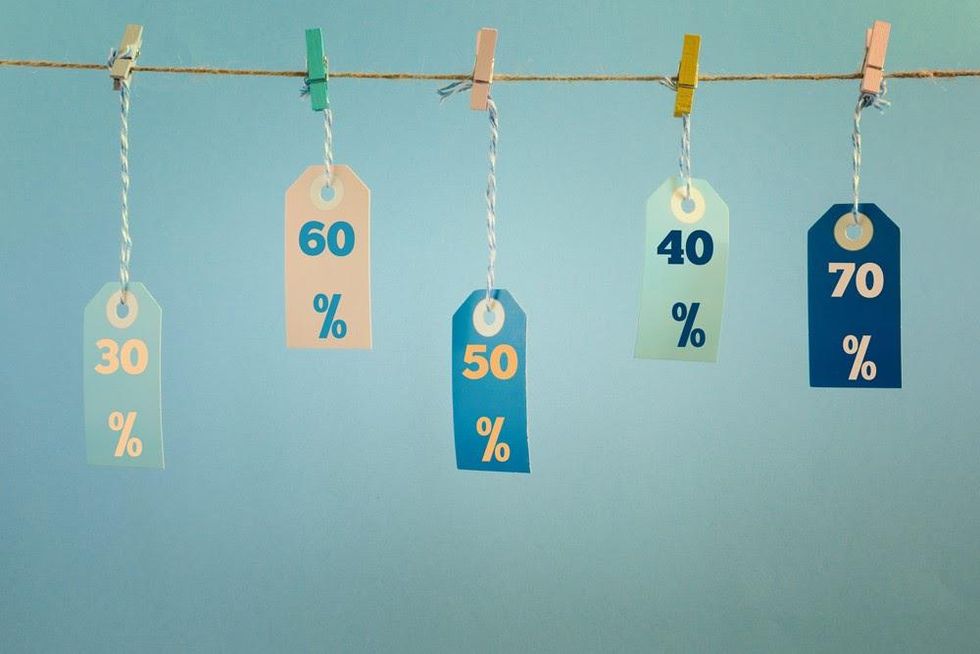
If your marketing is focused on, “here, buy my product!” those days are over. For marketing to be effective, consumers need to understand much more about your brand before buying your product in this highly competitive world.
Here are four signs why focusing on “buy my product” is making you look desperate.
Listen To The Article
Not Delivering Value
One of the biggest signs I see are companies communicating the exact features, benefits, and messaging points as their competitors, with no unique value. They fall into the trap of believing that they are different because they had, at one point in time, a surge of sales that has since slowed. Consumers have more choices than ever before for how to spend their time and money.
Unfortunately, there are many CEOs that believe an amateur can drive aggressive $20M growth goals instead of investing in brand marketing and strategy. Defining your brand’s strategy is not a “nice-to-have.” If you don’t take the time to define your brand strategy—understanding why consumers should buy from you and what unique value you provide them—you’ll lose them. Here is a guide on how to create a value proposition that’s valuable.
Reactive Marketing

Do you find your marketing team being reactive? For example, is your marketing team being hit with a ton of questions from within your organization like, “let’s send out an email this week promoting that we are back in stock,” or “we should send a holiday email with a discount across our entire portfolio.” And then when the marketing team constantly accommodates all of these requests, do you find your messaging is all over the place or—even worse—it’s lacking consumer engagement?
Results don’t come from being reactive. The “here, we have this widget, find us leads” mentality kills growth opportunities. Reactive marketing never works. When you don’t have a clear brand message, this creates havoc with your internal and external teams as you haven’t succinctly communicated who you are, what you do, and why you are different. Check out my article on how to create a clear brand messaging.
Lack Of Focus

Focus is one of the hardest things to communicate to entrepreneurs who try to cast a wide net to see what sticks in order to make their brand more appealing. Unfortunately, it’s all about ruthlessly prioritizing. Prioritizing your target audience. Prioritizing your marketing actions. Prioritizing your time.
- Prioritize Your Target Audience: It seems logical to want to sell to as many customers as possible. Unfortunately, 80% of consumers don’t think brands understand them as a person. The power of your brand relies on your ability to be focused. Take the time to identify your ideal target audience (check out my article on how to identify a target audience/market segmentation) to strengthen your brand and transform your business.
- Prioritize Your Marketing Actions: I’ve worked for start-ups that have invested heavily in a number of different marketing platforms but weren’t seeing a return on their investment. They were busy executing but hadn’t defined their strategy or KPIs. Having a strategic marketing plan will help you focus on what to do and what not to do with limited resources.
- Prioritize Your Time: Adobe Workfront found marketers spend less than 20% of their time on high-value work. They use the other 80% on tasks like meetings, administration, and responding to emails which can negatively impact your strategic growth plans.
Continuous Discounting

Discounting may seem like a good way to increase your sales. However, it actually hurts your brand in the long run. When you discount, you are shifting the focus from your brand and placing it on the price. Right now, discounting is all over e-commerce because it’s easy to do, not because it’s the right strategy to convert consumers. Consumers become conditioned to buy your brand only when it’s on sale. And when they do buy, they buy enough to last until the next sale. When you engage in continuous discounting, consumers become laser-focused on price vs. the key differentiators of your product, losing out on any emotional attachment to your brand (check out my article on emotional branding). They are also much more likely to switch to another brand based on price.
As you evaluate your pricing strategy, be strategic about your discounts, measuring their ongoing effectiveness and impact on your brand.
In summary, beware of these four signs: not delivering value, reactive marketing, lack of focus, and continuous discounting which can lead to “buy my product” desperation. When you invest the time in your brand, your business will reap benefits. Until next time, keep building your brand leadership. You’ve got this!
- How To Create A Tagline That Packs A Punch - Work It Daily ›
- Emotional Branding: Marketing To The Heart ›
- The Importance Of Branding For Your Business - Work It Daily ›
- 3 Tips To Adapt Your Marketing Strategy During COVID-19 - Work It ... ›
- How To Conduct Market Segmentation To Drive Conversions - Work ... ›
- Which Companies Got Emotional Branding Right? - Work It Daily ›
- Space Marketing: It's Time To Plan Your Brand's Future - Work It Daily ›

 Bigstock
Bigstock Bigstock
Bigstock Bigstock
Bigstock


